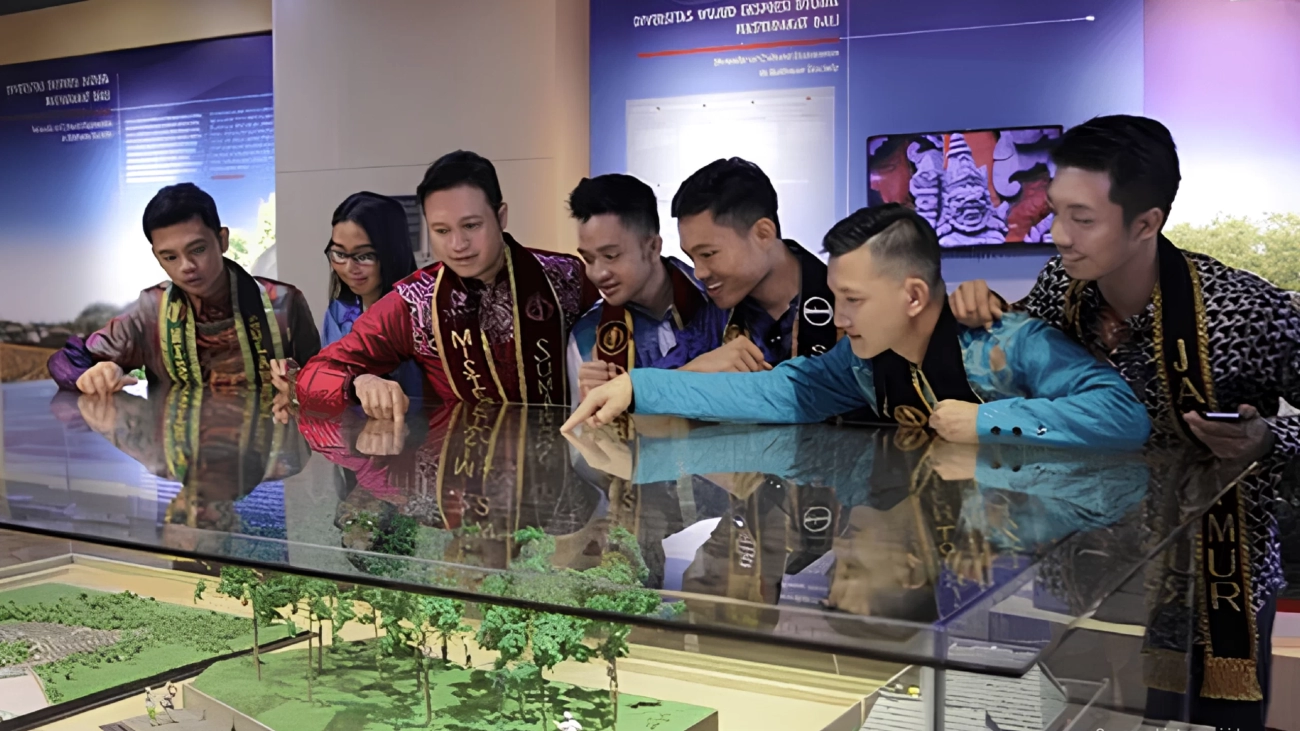Museum Geopark Batur Kintamani has become one of Bali’s newest tourist attractions. Inaugurated on April 1, 2016, by the Minister of Energy and Mineral Resources, Sudirman Said, the museum is located in the Kintamani region. It offers a unique experience for visitors who want to deepen their understanding of the natural, cultural, and historical richness of Geopark Batur.
Designed to provide a comprehensive overview of the geopark’s three main pillars – biodiversity, geology, and culture – the museum allows visitors to explore collections covering various essential aspects of each pillar. This provides profound insights into the beauty and uniqueness of Geopark Batur.
One of the main focuses of the museum is showcasing the abundant biodiversity around Mount Batur. The collection includes endemic flora and fauna that are integral parts of the region’s ecosystem. Visitors can understand the crucial role played by biodiversity in maintaining natural balance and protecting the environment. Moreover, the Geopark Batur Museum also highlights the striking geological diversity around Mount Batur. Information about volcanic formation, geological activities, and unique rock formations can be accessed by visitors through interactive and multimedia exhibitions.
In addition to natural aspects, the museum also pays special attention to the cultural diversity encompassing Geopark Batur. Exhibitions on local traditions, customs, and community life provide a complete picture of daily life closely related to its natural environment.
Built on a one-hectare land, the museum serves as an information center for Geopark Batur, as well as other national geoparks in Indonesia at 33 locations. The construction of the Geopark Batur Museum was a collaboration involving the Volcanology and Geological Hazard Mitigation Center, the Directorate General of Geology and Mineral Resources, the Ministry of Energy and Mineral Resources, and the Regional Development Planning Agency of Bangli Regency.
The establishment of the Geopark Batur Museum was deemed necessary after Mount Batur Geopark was recognized by UNESCO as part of the Global Geopark Network (GGN) on September 20, 2012. Geopark Batur holds its uniqueness not found in other geoparks, notably the presence of two calderas. What makes it special is that Caldera I formed Caldera II inside it. The caldera in Mount Batur is estimated to have formed after two major eruptions 29,300 and 20,150 years ago. Caldera II also houses a crescent-shaped lake known as Lake Batur, measuring 7.5 kilometers in length and 2.5 kilometers in width.
Geopark Batur Museum Structure
The Geopark Batur Museum comprises two floors. The first floor features the main lobby with a space showcasing geological diversity. In the main lobby area, visitors can witness a diorama of Mount Batur. The diorama presents a miniature version of Mount Batur and Lake Batur in a square shape measuring 2.5 x 2 meters. The second floor includes rooms dedicated to biodiversity, cultural diversity, and an auditorium. In the auditorium, visitors can watch various educational films about volcanoes and geoparks. Within the Geopark Batur Museum building, you can also observe Mount Batur’s volcanic activities from an observation post. Observing volcano activities can be an enriching experience, adding knowledge about volcanic activities.
Location and Admission to Geopark Batur Museum Kintamani
The Geopark Batur Museum Kintamani is the first geopark-concept museum in Indonesia and is located on Jalan Raya Penelokan, Kintamani, Bangli Regency, Bali. It takes approximately 2 hours of travel time from Kuta. For convenience, you can choose to take a taxi or rent a private vehicle. To enter the Geopark Batur Museum Kintamani, visitors need to pay an entrance fee of Rp 20,000 for adults and Rp 15,000 for children. The visiting hours for the Geopark Batur Museum are from 08:00 to 16:00 WITA on Mondays to Thursdays, and from 08:00 to 14:00 WITA on Saturdays and Sundays. The museum is closed on Fridays and national holidays.
Visiting the Geopark Batur Museum can be an educational experience while enjoying the cool atmosphere at the mountainous heights of the Kintamani region. Moreover, you can discover several other equally interesting tourist spots around this geopark. Considering that the Kintamani area is known as a popular tourist destination on the Island of Bali, it’s a must-visit location.




